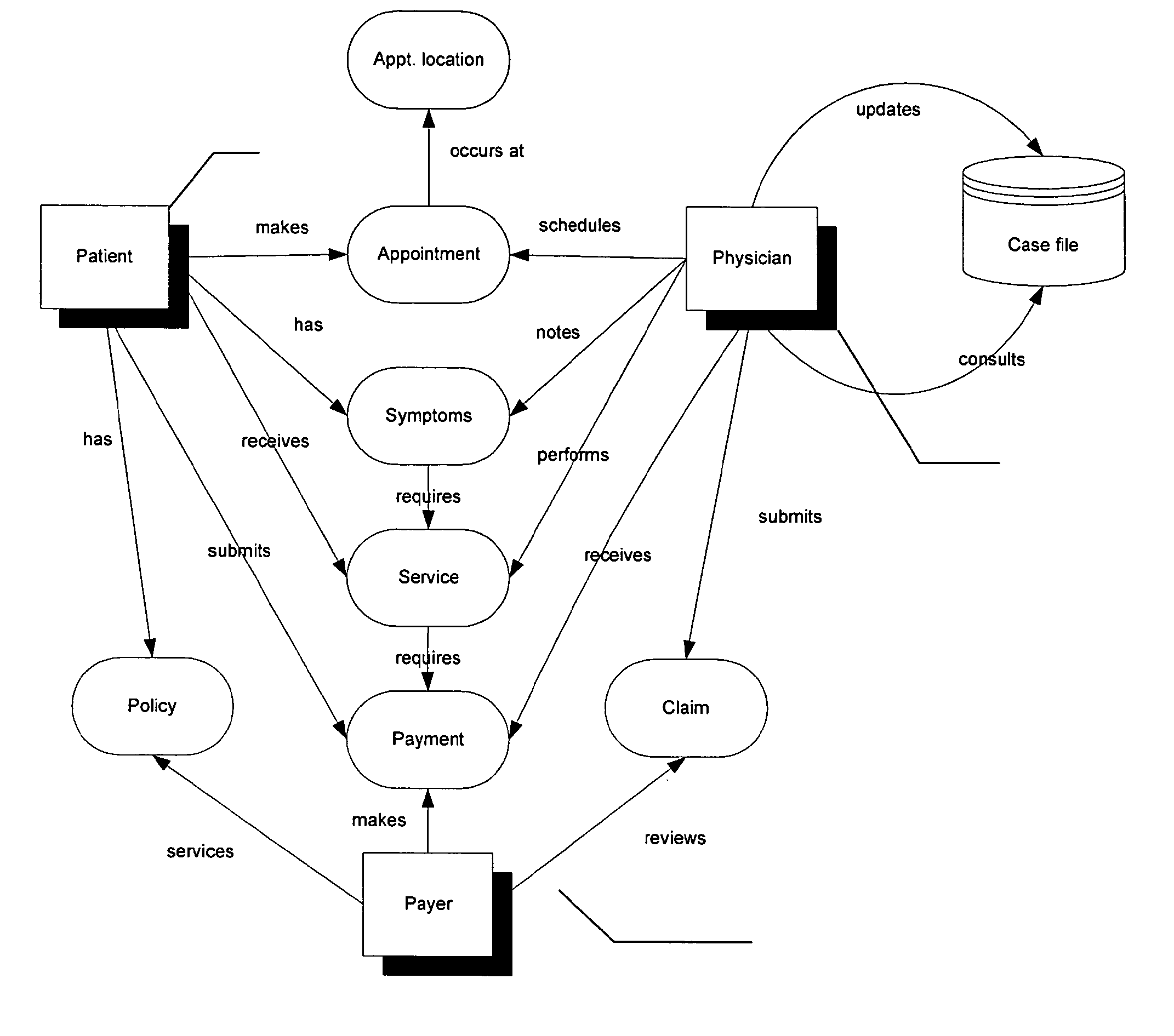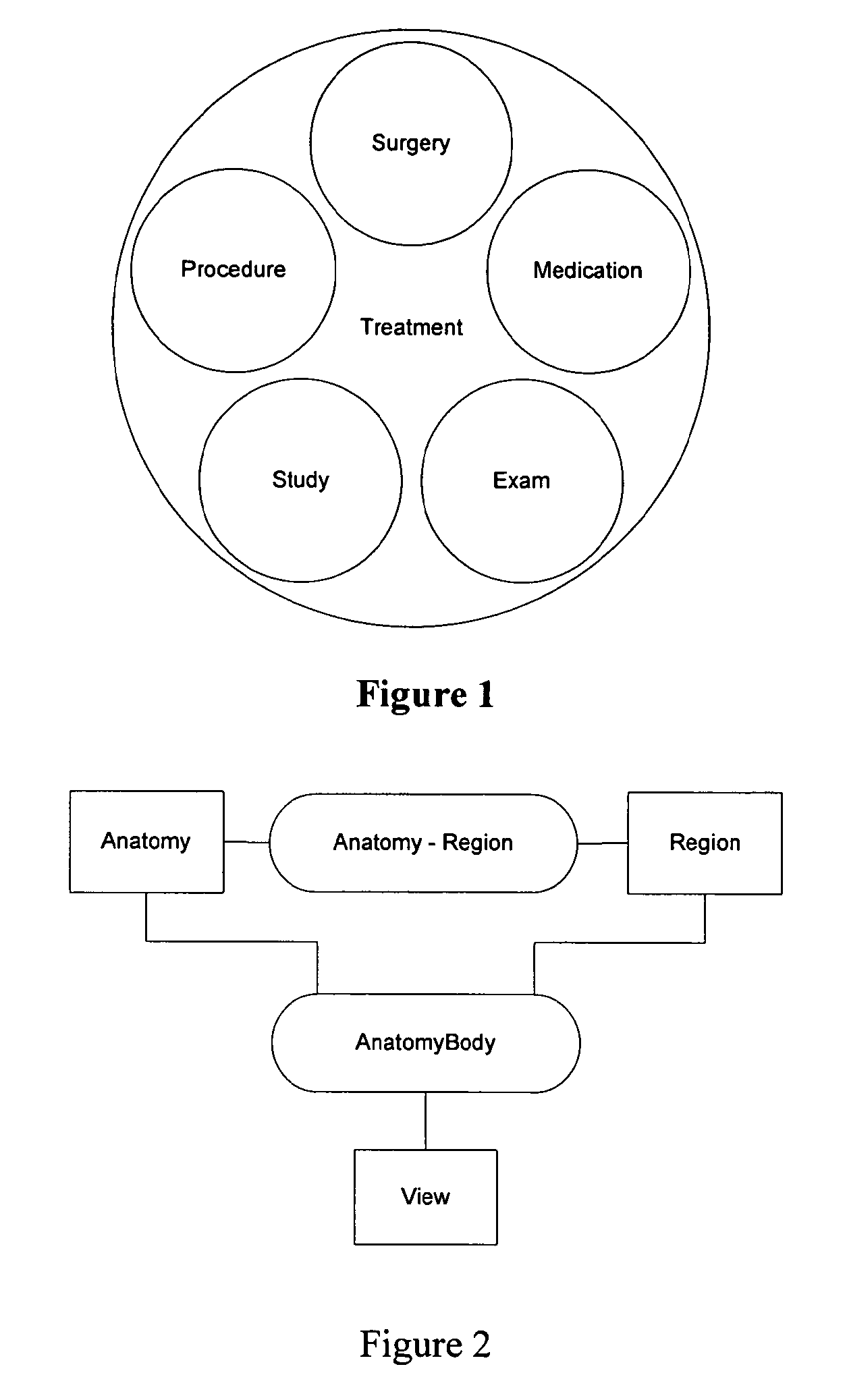Integrated system for generation and retention of medical records
a medical record and integrated system technology, applied in the field of electronic generation and retention of clinical and administrative medical records, can solve the problems of inability to accurately and accurately display the patient's medical history, difficulty in reading, and difficulty in maintaining patient charts and records, and paper records have numerous obvious limitations and drawbacks
- Summary
- Abstract
- Description
- Claims
- Application Information
AI Technical Summary
Benefits of technology
Problems solved by technology
Method used
Image
Examples
Embodiment Construction
[0075]The present invention is generally a system for facilitating the gathering of patient medical Treatment data useful for generating an accurate patient chart note, producing a billing claim, and for storing the raw data in a relational database format that lends itself to producing outcome studies useful for determining the efficacy of current and new medical treatments.
[0076]The system of the instant invention populates patient records by use of evidence-based evaluation systems, which compare the medical practitioners Diagnoses to predetermined responses, including those of experts in the field, to produce accurate patient chart notes and the integration of stored and generated data into clinical and administrative medical record keeping and billing.
[0077]The system, in one aspect, provides a secure, homogeneous user friendly network for recording medical treatment, practice management, and claim transactions among diverse users some of whom have medical knowledge and some th...
PUM
 Login to View More
Login to View More Abstract
Description
Claims
Application Information
 Login to View More
Login to View More - R&D
- Intellectual Property
- Life Sciences
- Materials
- Tech Scout
- Unparalleled Data Quality
- Higher Quality Content
- 60% Fewer Hallucinations
Browse by: Latest US Patents, China's latest patents, Technical Efficacy Thesaurus, Application Domain, Technology Topic, Popular Technical Reports.
© 2025 PatSnap. All rights reserved.Legal|Privacy policy|Modern Slavery Act Transparency Statement|Sitemap|About US| Contact US: help@patsnap.com



